Leather and fabric are two of the most popular materials used in crafting projects. Whether it’s a new purse or an upholstery project, combining leather and fabric can create interesting effects. Glue is often used to affix these materials together, but there are some tricks to getting it right. Read on for all you need to know about how to glue leather to fabric.
Is It Possible To Glue Fabric To Leather?
The short answer is yes. Glue can be used to stick leather and fabric together, but you’ll need to make sure that you select the right type of glue. Some glues are designed specifically for bonding leather and fabric, while others may not be suitable due to their lack of flexibility. [2]
Does Fabric Glue Work On Leather?
Yes, fabric glue can be used to bond leather and fabric together. It is important to note that not all glues are designed for every kind of material, so it is best to check the label before applying any adhesive. Fabrics such as denim, cotton and other woven materials usually need a special type of glue that works on both the leather and the fabric. [2]
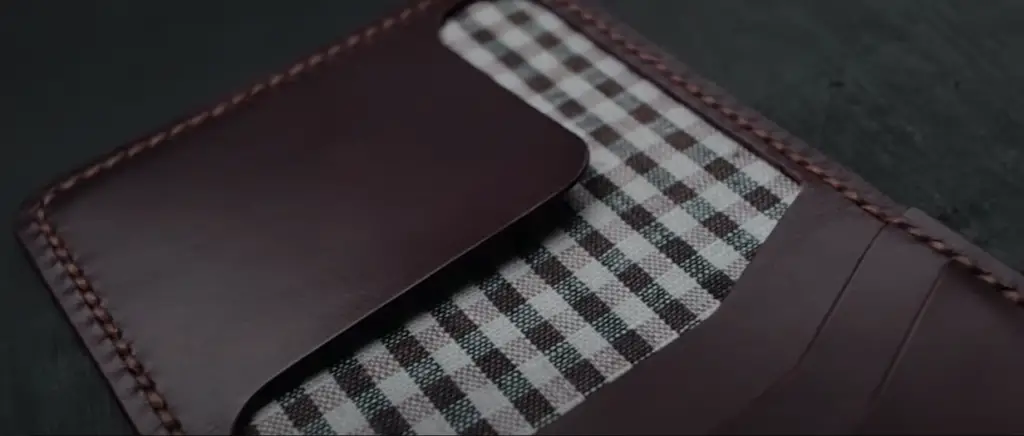
What to do before fixing fraying and holes with glue?
Before beginning any glue task, you’ll want to take the time to thoroughly prepare your fabric and leather. Start by cleaning both materials with a cloth dampened in warm water and mild soap. This will help remove any dirt or residue that could interfere with the adhesion of the glue.
Lastly, make sure you know where you’ll be working on your project. Working outside is ideal as the fumes from some glues can be quite strong. It’s also helpful to have a flat surface and good lighting, so you can clearly see what you’re doing as you work. [2]
How to Prepare Fabric and Leather Before Gluing?
Before you start gluing your leather and fabric together, it’s important to prepare the materials properly. This involves testing the compatibility of the glue with each material, cleaning the surfaces, and cutting the pieces so they fit together perfectly.
To test if your chosen glue is compatible with leather and fabric, take a small scrap piece of both materials and apply glue to it. Wait a few minutes and check if the fabric sticks properly to the leather. If you’re not sure, you can always consult the instructions on your glue’s packaging.
Next, it’s important to clean both surfaces with a damp cloth before applying the glue. This will help ensure that all dirt, oils, and other contaminants are removed before gluing.
Before you apply the glue, make sure to cut the pieces of leather and fabric so they fit together properly. Make sure that there are no gaps or overlapping edges, as this can affect how well the two materials stick together. You can use a pair of scissors or an X-acto knife for precision cutting. [2]
How Do You Glue Fabric To Leather?
Gluing fabric to leather can be tricky, but with the right supplies and techniques, anyone can do it! Here’s what you need to know about preparing your materials and getting the job done. [1]
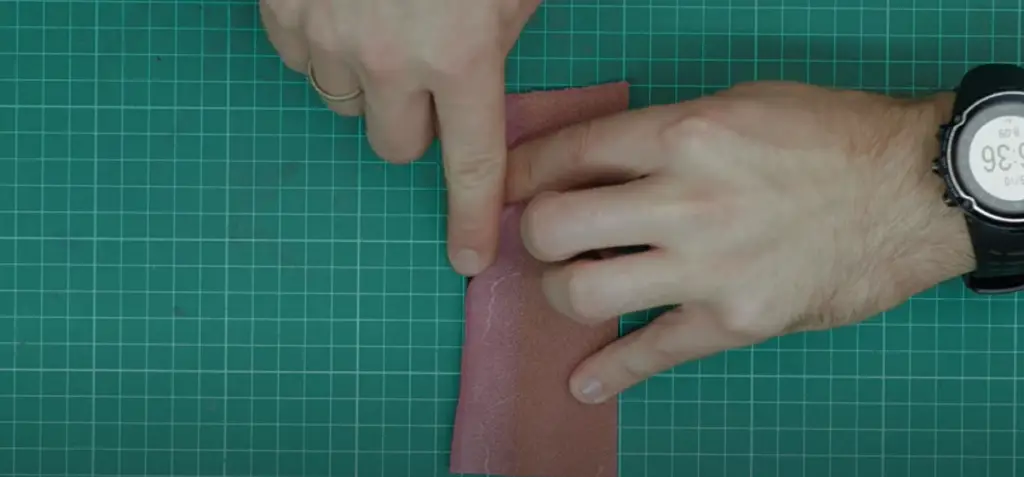
Step 1: Choose Your Glue
The type of glue will depend on the project you are working on and whether or not you need flexibility and water resistance. One of the more popular choices is contact cement; it adheres quickly and is resistant to many elements, but it won’t be as flexible as a fabric glue or hot glue. You can also use epoxies, glues specifically designed for leather and vinyl, and superglue if you’re looking for a quick bond.[1]
Step 2: Prepare the Materials
Before you begin gluing, it’s important to make sure both the fabric and leather are clean and free of dirt or oils. This will help ensure a successful adhesive bond. Additionally, any old glue should be removed from either material before starting. If your project requires any cutting, do that now prior to applying the glue. [1]
Step 3: Apply the Glue
Apply a thin, even layer of the chosen adhesive to both surfaces. Make sure you cover all areas that will be touching and allow the adhesive to dry for about five minutes before bringing the materials together. [1]
Step 4: Bonding the Materials
Bring the fabric and leather together, pressing firmly in place. You may need to use a heavy object or clamp to ensure the fabric and leather are securely bonded. Allow the glue to set for at least 24 hours before using your completed project. [1]
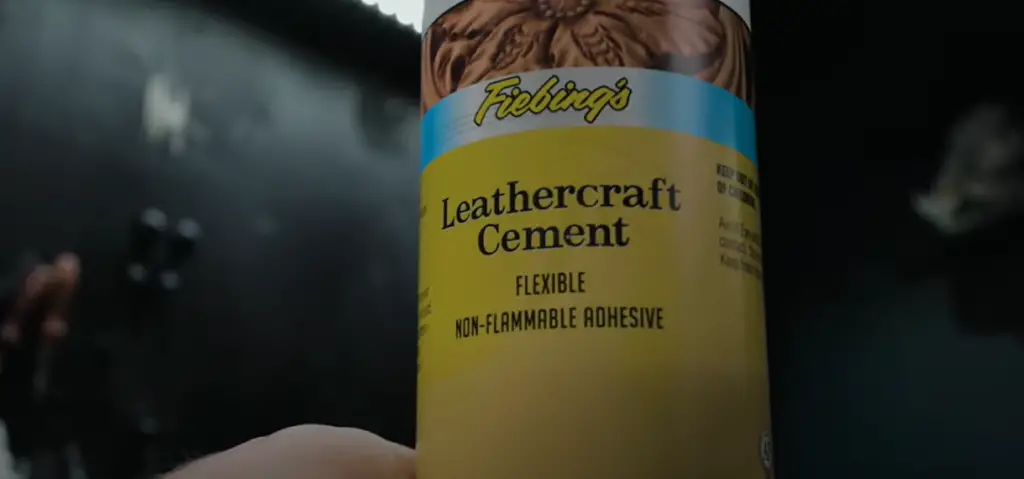
How Long Does Glue Last On Fabric And Leather?
The answer to this question depends on the type of glue you use. Generally, most adhesives will last for a period of at least six months when stored in a cool dry place away from direct sunlight and moisture. Some glues may even last up to several years if used and stored properly. If you plan on using any adhesive in your leather to fabric project, make sure to check the expiration date printed on the packaging and follow the manufacturer’s instructions for proper storage.
You may also want to consider using a stronger adhesive such as contact cement or hot glue if you are concerned about how long your glue will last. These adhesives are designed to stand up better against wear and tear over time. [2]
How to Cure Fabric and Leather Glue?
Once you’ve applied the glue to your fabric and leather project, it’s important to let it cure properly. The length of time required for curing will depend on the type of glue that you have used. Check the instructions on the package or container to determine how long it should be left before use. Generally speaking, an adhesive glue needs 24 hours to cure and waterproof glue should be left for 48 hours.
Be sure to leave the project undisturbed, in a warm place, while it cures. If you are using a spray adhesive, make sure that you open windows or turn on fans for ventilation and do not breathe in the fumes. [2]
What Glue Can You Use for Fabric to Leather?
Fabric Glue
If you’re looking for an easy, affordable way to bond fabric and leather together, then fabric glue is an excellent option. Fabric glues are specially formulated to adhere quickly and securely between different types of fabrics and materials, making it perfect for bonding leather and fabric together. Simply apply a small amount of glue onto each piece of material before carefully pressing them together. [3]
Contact Polyurethane
For a more permanent bond, contact polyurethane adhesives are ideal for bonding fabric and leather. Contact polyurethane glue is applied on both surfaces before they are pressed together. It forms an extremely strong, durable bond that won’t easily come apart. While it does take longer to cure than fabric glue, the permanence of the bond makes it the best option for a long-term wear application. [3]
Leather Glue
Leather glue is another great option for bonding leather to fabric. Leather glue is formulated specifically to securely bond leather without damaging it, making it perfect for use with delicate fabrics like suede. To use, apply a thin layer of the adhesive onto both surfaces before pressing them together and allowing them to dry fully. [3]
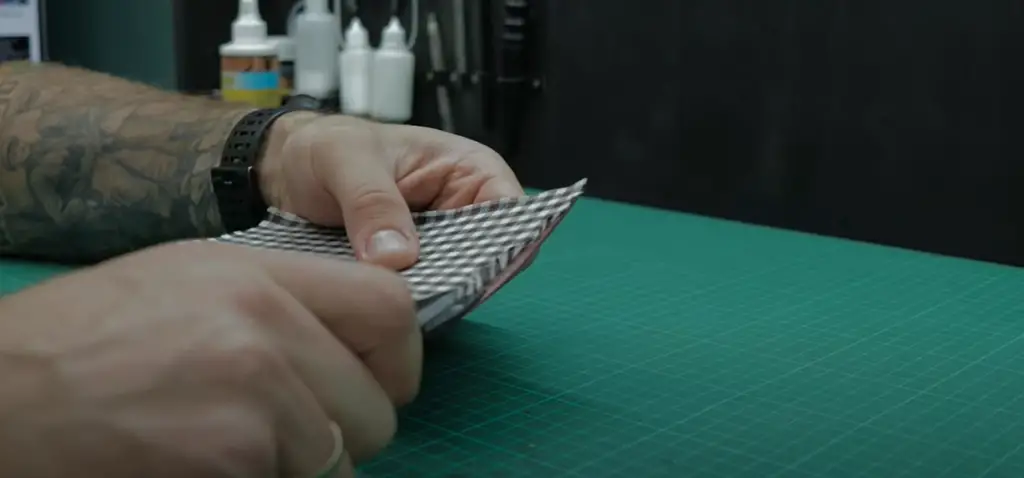
Which is the Best Glue to Use?
When deciding on which glue to use when gluing leather to fabric, it is important to keep in mind that there are two types of adhesives: contact cement and heat activated adhesive.
Heat activated adhesive, on the other hand, takes longer to set and requires some sort of clamping or pressure applied while drying. [1]
Fixing leather with leathercraft cement
One of the best ways to glue leather to fabric is by using leathercraft cement. This type of adhesive is specially formulated for use on leather materials. It’s easy to use, reliable and creates a strong bond between the two surfaces that won’t easily come apart.
To use leathercraft cement first apply it evenly to both surfaces in a thin layer. Make sure that the entire surface is coated. When both surfaces are ready, press them firmly together and hold for 30 seconds. This should be enough time to create a strong bond between the two materials. Once it’s set you can expect a durable adhesion that won’t come undone easily. [1]
Fixing different fabrics with glue
Torn jeans
Torn jeans, holes in bags and other wear-and-tear damage can often be easily fixed with the right glue. Leather is a tricky material to work with, but it’s not impossible to glue it back onto fabric. Here are some key steps you should follow if you decide to try your hand at leather repair.
- Prepare the surfaces that you will be gluing. Make sure they’re clean and free of dirt or other debris, then use sandpaper to rough up the areas that will be glued together. This will help create a stronger bond between the leather and fabric when the glue is applied.
- Choose a suitable adhesive for your purpose. Leather needs an adhesive that’s specially formulated to bond it with fabric. Look for one that’s designed specifically for leather and fabric, such as a contact cement or neoprene rubber glue.
- Apply the adhesive to both surfaces you are bonding together and wait until the adhesive becomes tacky before placing them in contact with each other. This will ensure a good bond between the leather and fabric.
- Secure the pieces in place by using pins, clips or clamps to keep them together while the glue sets. Make sure to use enough pressure to ensure that the surfaces are firmly held against each other. This will help create a strong bond between the leather and fabric. [3]
Regular fabrics
Regular fabrics like cotton, linen and canvas can also be glued with leather. The same steps should be followed as above but the adhesive will need to be chosen accordingly. Generally speaking, a rubber glue or contact cement is best for gluing regular fabrics to leather.
Once you have chosen your adhesive, make sure to apply it evenly on both surfaces before pressing them together. Secure the pieces in place with pins, clips or clamps and allow it to dry overnight.
Gluing leather to fabric can be a tricky job but with a bit of patience and practice, you can achieve impressive results. Just remember to prepare your surfaces correctly and choose the right adhesive for your purpose! [3]
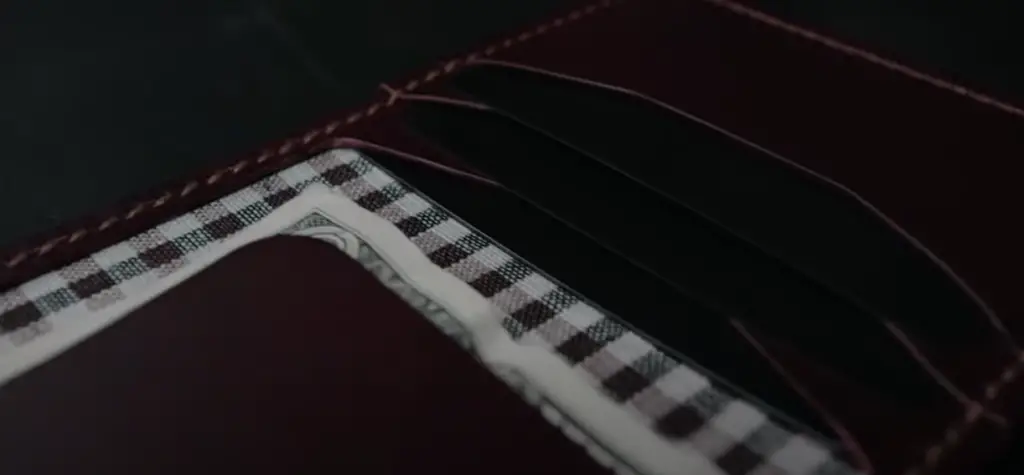
FAQ
What glue can I use on leather?
When gluing leather to fabric, you’ll need a special glue that is designed specifically for this task. The best type of glue to use when bonding leather and fabric together is a water-based contact adhesive. This special adhesive will create a strong bond between the two materials without leaving any residue or damaging either material. It’s also important to make sure that the adhesive you use is designed for use with leather and fabric, as some glues are not suitable for these materials.
Does fabric glue hold leather?
Yes, fabric glue can hold leather if the glue is specifically designed for use with leather. Be sure to read the instructions on the package of any adhesive you plan to use, as some glues are not suitable for bonding leather and fabric together. Additionally, a water-based contact adhesive is typically preferred when joining these two materials since it creates a strong bond without leaving any residue or damaging either material.
How do you permanently glue leather?
When gluing leather permanently, it’s important to use an adhesive that is designed specifically for this task. The best type of glue to use when bonding leather is a water-based contact adhesive. This special adhesive will create a strong bond between the two materials without leaving any residue or damaging either material.
Can leather be glued?
Yes, leather can be glued together with the right adhesive. Be sure to use a water-based contact adhesive that is designed for use with leather, as some glues are not suitable for these materials. Additionally, it’s important to make sure the surface of both materials is clean and dry before applying the glue in order to create a strong bond between them.
Can you glue leather instead of sewing?
Yes, you can glue leather instead of sewing it together, but it’s important to use the right adhesive. A water-based contact adhesive is typically preferred when joining two pieces of leather together since it creates a strong bond without leaving any residue or damaging either material.
Can I use superglue on leather?
No, it’s not recommended to use superglue when bonding leather together. Superglue is designed for use with certain materials, such as plastic and metal, but it can be damaging to leather and other fabrics. Additionally, the bond created by superglue is not as strong as that of a water-based contact adhesive.
How do you attach leather without sewing?
If you don’t want to sew leather pieces together, the best way to attach them is with a water-based contact adhesive. This special adhesive will create a strong bond between the two materials without leaving any residue or damaging either material. Additionally, it’s important to make sure the surface of both materials is clean and dry before applying the glue in order to create a strong bond between them.
Can you glue leather with a glue gun?
No, it’s not recommended to use a glue gun when bonding leather together. Glue guns are typically designed for use with certain materials, such as plastic and metal, but they can be damaging to leather and other fabrics. Additionally, the bond created by an adhesive from a glue gun is not as strong as that of a water-based contact adhesive.
Useful Video: Does Fabric Glue Work on Leather? 2023
Conclusion
Glueing leather to fabric is an easy process once you have the right materials and know how. Make sure that both surfaces are free of dirt, oil, or any other debris before applying adhesive. It’s also important to use a glue specifically designed for this purpose – most craft stores will carry one suitable for your project.
Once the adhesive has dried, you can sew the leather to the fabric or use rivets or other fasteners. If necessary, you can also use additional reinforcement such as batting or interfacing for extra strength and durability. Be sure to test a small section of your materials first to make sure the glue won’t damage them in any way.
With these tips and advice, anyone can successfully glue leather to fabric. Now you’ll be prepared for any project that requires this type of material combination! Good luck and have fun creating your new leather and fabric masterpiece.
References:
- https://craftsbliss.com/glue-fabric-to-leather/#
- https://gluelab.com/how-to-glue-fabric-to-leather/
- https://pausemag.co.uk/2022/01/how-to-fix-leather-and-fabric-with-glue/

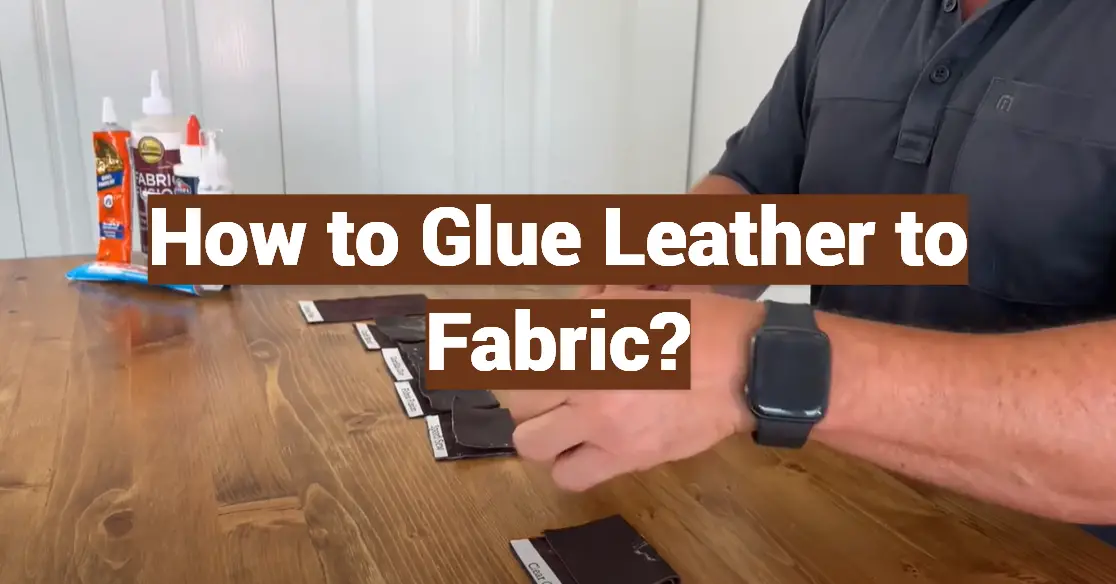

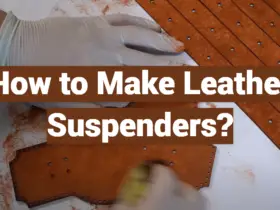

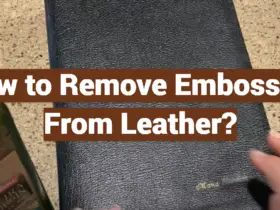

Leave a Reply